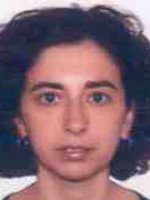abstract
By employing H-1 NMR spectroscopy and molecular simulations, we provide an explanation for recent observations that the aqueous Solubilities of ionic liquids exhibit salting-out to salting-in regimes upon addition of distinct inorganic salt ions. Using a typical ionic liquid [1-butyl-3-methylimidazolium bis(trifluoromethylsulfonyl)imide], we observed the existence of preferential specific interactions between the low electrical charge density ("apolar moiety") parts of the ionic liquid cation and the inorganic salts. These a priori unexpected interactions become increasingly favorable as one moves from salting-out to salting-in effects. More specifically, this interpretation is validated by distinct aqueous solution H-1 NMR data shifts in the ionic liquid cation upon inorganic salt addition. These shifts, which are well noted in the terminal and preterminal hydrogens of the alkyl chain appended to the imidazolium ring, correlate quantitatively with solubility data, both for cases where the nature of inorganic salt is changed, at constant concentration, and for those where the concentration of a given inorganic salt is varied. Molecular simulations have also been performed permitting us to garner a broader picture of the underlying mechanism and structure of this complex solvation phenomenon. These findings can now be profitably used to anticipate solution behavior upon inorganic salt addition well beyond the specificity of the ionic liquid solutions, i.e., for a diversity of distinct solutes differing in chemical nature.
keywords
HYDROPHOBIC IONIC LIQUIDS; AQUEOUS BIPHASIC SYSTEMS; MUTUAL SOLUBILITIES; HOFMEISTER SERIES; SELF-ASSOCIATION; WATER; PRECIPITATION; AGGREGATION; SIMULATION; BEHAVIOR
subject category
Chemistry
authors
Freire, MG; Neves, CMSS; Silva, AMS; Santos, LMNBF; Marrucho, IM; Rebelo, LPN; Shah, JK; Maginn, EJ; Coutinho, JAP
our authors
Groups
G4 - Renewable Materials and Circular Economy
G5 - Biomimetic, Biological and Living Materials
acknowledgements
The authors thank FCT for Project PTDC/EQU-FI7/65252/2006 and Grant SFRWBPD/41781/2007. ETM, and J.K.S. acknowledge Support from the Air Force Office of Scientific Research tinder Contract No. FA9550-07-1-0443.





